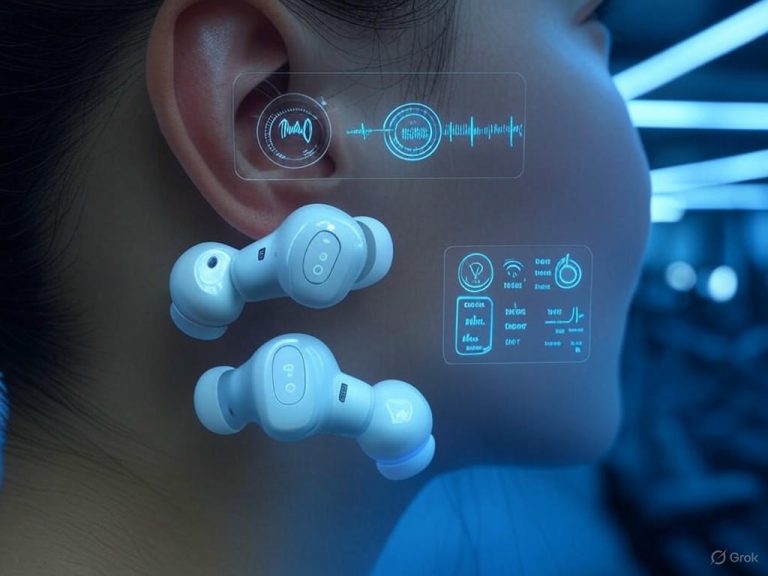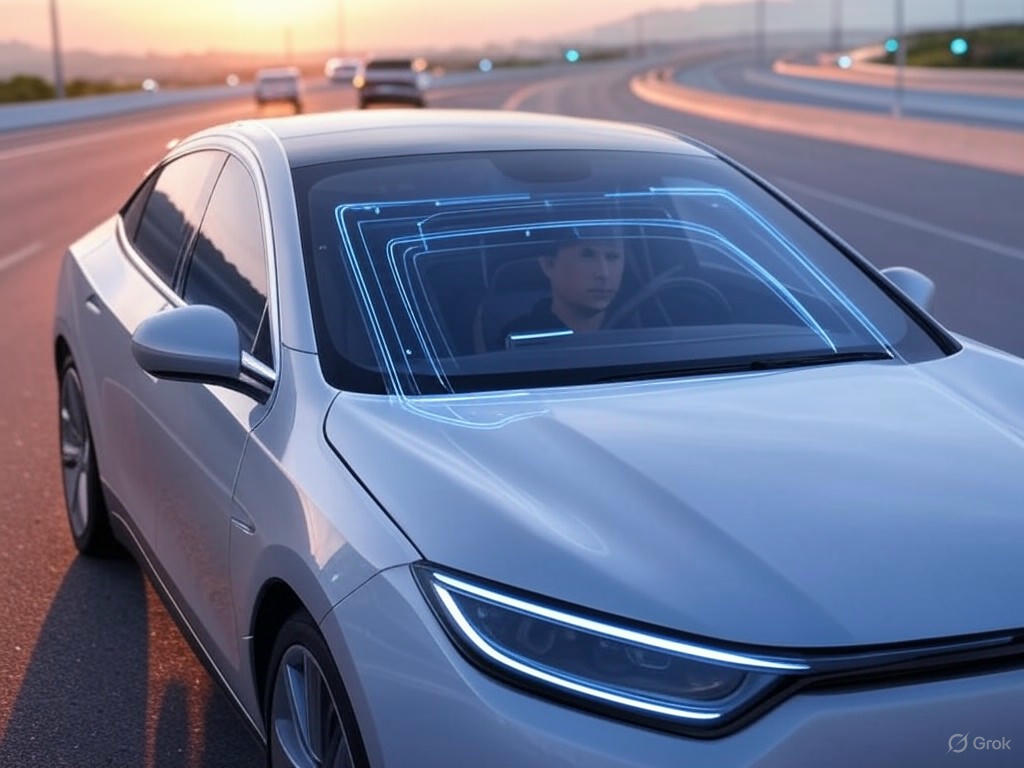
Level 3 Self-Driving Cars 2025: What Drivers Must Know Now
- Introduction: Understanding Level 3 Autonomy in 2025
- Introduction: Understanding Level 3 Autonomy in 2025
- What Exactly Is Level 3 Autonomy in 2025?
- Level 3 vs. Level 2 and Level 4: Key Differences
- Why Level 3 Matters for Everyday Drivers in 2025
- How Level 3 Fits Into the Broader Self-Driving Car Evolution
- Technical Foundations and System Architecture of Level 3 Vehicles
- Technical Foundations and System Architecture of Level 3 Vehicles
- Sensor Suites: Comprehensive Environmental Perception
- Computing Hardware and Software: Orchestrating Autonomy
- Case Studies: Mercedes-Benz DRIVE PILOT and Tesla Full Self-Driving
- Key Metrics and Reliability Considerations
- Real-World Performance: Practical User Experience and Limitations
- Real-World Performance: Practical User Experience and Limitations
- Performance in Common Driving Scenarios
- User Feedback: Strengths and Pain Points
- Operational Design Domains (ODD) and Takeover Triggers
- Summary and Practical Implications
- Comparative Analysis: Level 3 vs. Level 2 and Emerging Level 4 Systems
- Comparative Analysis: Level 3 vs. Level 2 and Emerging Level 4 Systems
- Autonomy Scope and Driver Involvement: A Practical Breakdown
- Safety Performance and Regulatory Status: The Fine Print
- Benchmarking Tesla Autopilot and GM Super Cruise Against Level 3 Systems
- Key Takeaways
- Regulatory Environment and Safety Standards Impacting Level 3 Adoption
- Regulatory Environment and Safety Standards Impacting Level 3 Adoption
- Global Regulatory Approvals and Frameworks
- Governmental Testing Permissions, Liability, and Safety Certifications
- Legislative Impact on Consumer Availability and Market Penetration
- Key Takeaways
- Market Availability and Consumer Considerations for 2025 Level 3 Vehicles
- Market Availability and Consumer Considerations for 2025 Level 3 Vehicles
- Who’s Offering Level 3 in 2025? Pricing, Models, and Geographic Availability
- Practical Buying Considerations: Infrastructure, Insurance, and Software Updates
- Integration with Other ADAS Features and the User Learning Curve
- Bottom Line
- Future Outlook: Innovations and Challenges Beyond Level 3 Autonomy
- Future Outlook: Innovations and Challenges Beyond Level 3 Autonomy
- Technological Innovations Driving the Next Step
- Persistent Challenges in Urban Environments and Security
- Regulatory Harmonization and Adoption Timelines
- Industry Trends and Partnerships
- What Users Can Realistically Expect Next
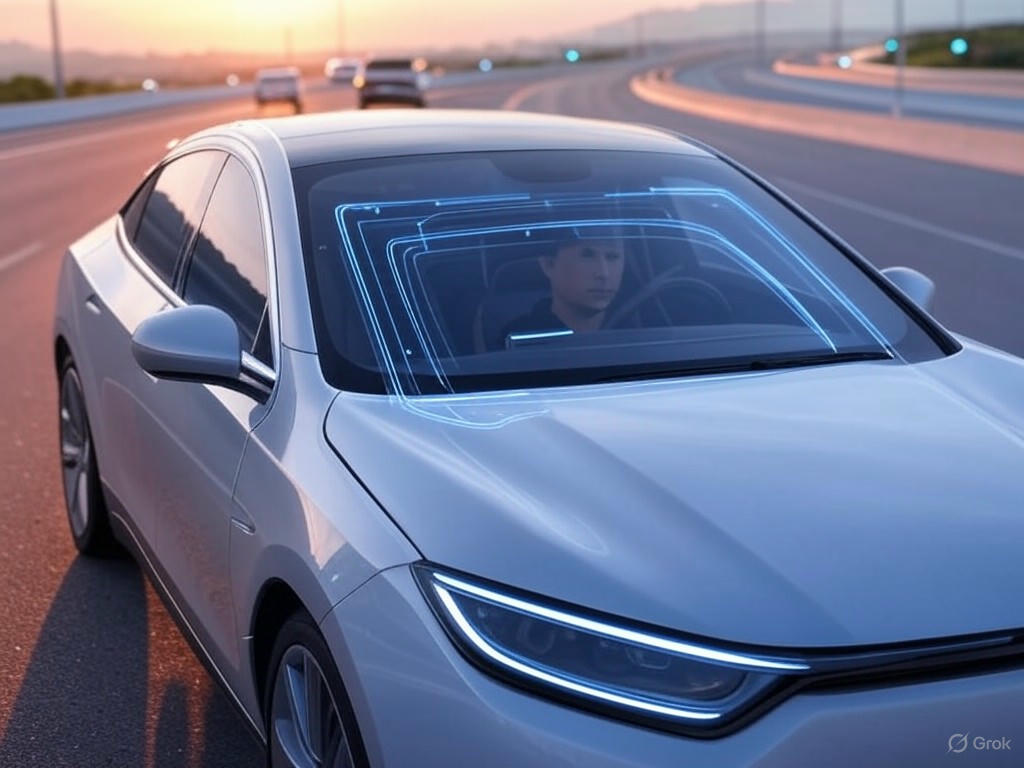
Introduction: Understanding Level 3 Autonomy in 2025
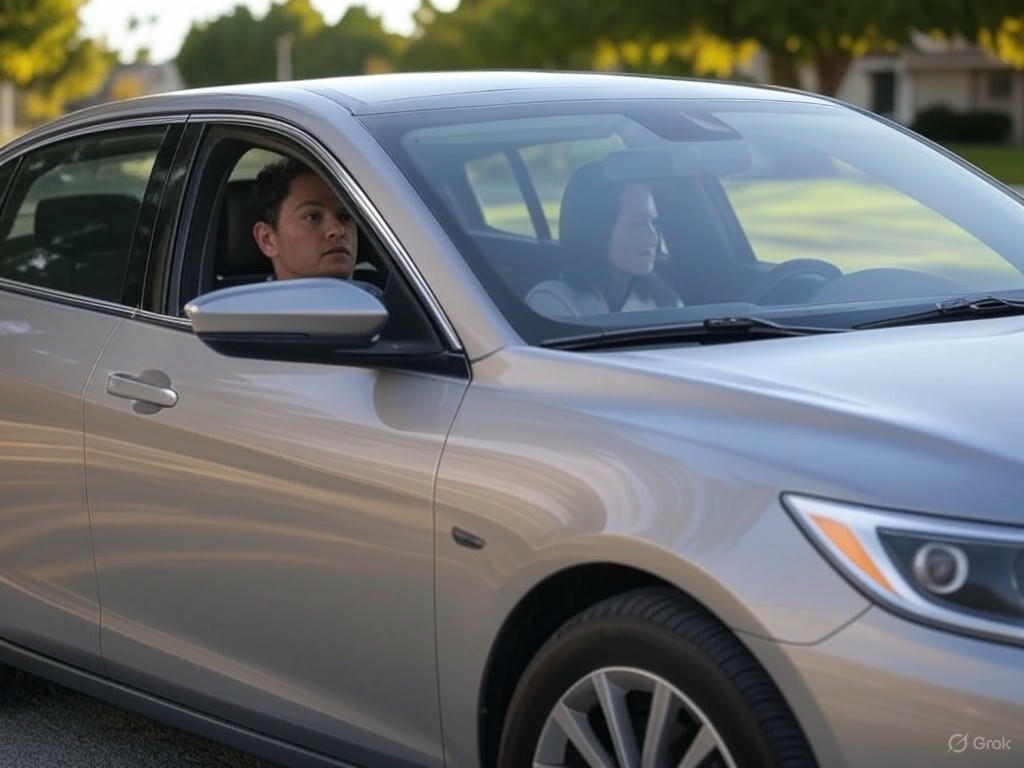
Introduction: Understanding Level 3 Autonomy in 2025
Level 3 autonomy holds a critical and distinct role in the evolving landscape of automotive technology in 2025. As defined by the SAE J3016 standards, Level 3 automation—often referred to as “conditional automation”—enables a vehicle to manage all aspects of driving within a specified Operational Design Domain (ODD), such as controlled-access highways or defined speed ranges. Unlike Level 2 systems, where the driver must continuously supervise the driving environment, Level 3 allows the human occupant to disengage from constant monitoring but requires readiness to intervene when the system issues a takeover request.
What Exactly Is Level 3 Autonomy in 2025?
According to the Society of Automotive Engineers (SAE), Level 3 systems control steering, acceleration, braking, and environmental monitoring within their operational boundaries. This enables “hands-off” and “eyes-off” driving, but only within the vehicle’s ODD. For instance, Stellantis’ STLA AutoDrive 1.0 system exemplifies Level 3 autonomy by allowing autonomous operation on highways at speeds up to 60 km/h (approximately 37 mph), particularly effective in stop-and-go traffic scenarios.
Despite this autonomy, the driver must remain prepared to retake control when prompted, as Level 3 systems are not designed for all driving conditions. This conditional autonomy introduces a nuanced balance between convenience and driver responsibility, distinguishing it sharply from Level 2 systems. The National Highway Traffic Safety Administration’s (NHTSA) updated regulations, effective June 2025, underscore the necessity for rigorous safety standards, transparent reporting, and clear driver fallback protocols as these vehicles become more prevalent.
Level 3 vs. Level 2 and Level 4: Key Differences
To fully appreciate Level 3 autonomy, it is essential to contrast it with adjacent levels:
-
Level 2 (Partial Automation): Currently the most widespread, Level 2 systems assist with steering and speed control but mandate constant driver attention and immediate readiness to take control. Tesla’s Enhanced Autopilot and GM’s Super Cruise exemplify this level but still require driver supervision.
-
Level 3 (Conditional Automation): The vehicle autonomously manages all dynamic driving tasks within a defined ODD without continuous driver supervision. However, the driver must act as a fallback, ready to intervene upon system request. Technologies like Stellantis’ STLA AutoDrive 1.0 mark the first commercial deployments at this level.
-
Level 4 (High Automation): Vehicles operate fully autonomously within their ODD, without expecting driver intervention. Presently, Level 4 autonomy is mostly limited to pilot programs and robotaxi services in controlled urban zones, such as those run by Waymo and Cruise, and is not yet available for mass-market consumer vehicles.
The transition from Level 2 to Level 3 is significant as it reduces driver cognitive load during routine highway driving but does not eliminate the human role. Level 4 represents a further leap toward full autonomy but remains constrained geographically and operationally.
Why Level 3 Matters for Everyday Drivers in 2025
The commercial introduction of Level 3 autonomy in 2025 represents a meaningful milestone in the progression toward fully autonomous vehicles. It offers several tangible benefits for everyday drivers:
-
Enhanced Safety: By automating driving in predictable settings, Level 3 systems can substantially reduce human error—the cause of over 90% of traffic accidents. These systems leverage advanced sensor arrays, including cameras, radar, and lidar, to maintain constant, precise environmental awareness.
-
Convenience: Drivers can safely divert their attention during extended highway segments, facilitating activities such as navigation review or brief non-driving tasks, while remaining ready to resume control promptly.
-
Regulatory Advances: The rollout coincides with evolving safety frameworks like NHTSA’s 2025 General Order, emphasizing incident transparency, cybersecurity, and fallback readiness.
-
Industry Momentum: Projections from Goldman Sachs suggest that by 2030, Level 3 vehicles may constitute up to 10% of new global car sales. Leading Original Equipment Manufacturers (OEMs) such as Stellantis, Honda, and Tesla are actively integrating Level 3 capabilities into upcoming models, balancing innovation with practical deployment.
Nevertheless, it is important to maintain realistic expectations. Level 3 autonomy is not a “set it and forget it” solution. Its ODDs typically restrict operation to well-mapped highways under favorable weather and traffic conditions. Drivers must remain alert to system handover requests, posing unique human-machine interaction challenges absent in higher autonomy levels.
How Level 3 Fits Into the Broader Self-Driving Car Evolution
Level 3 autonomy serves as a crucial bridge between driver-assist technologies and fully autonomous vehicles. It embodies advances in artificial intelligence, sensor fusion, and real-time decision-making that enable conditional hands-free driving under limited scenarios.
While fully driverless Level 5 vehicles remain years from mainstream adoption, Level 3 offers a pragmatic, incremental upgrade that can immediately enhance safety and driver comfort. For many consumers, 2025 marks the first opportunity to legally experience “hands-off” driving in everyday cars. For manufacturers, it provides a valuable platform to refine technology, regulatory compliance, and user education ahead of more ambitious autonomous deployments.
In summary, Level 3 autonomy in 2025 represents a significant advancement—melding technical sophistication with practical usability. It lowers driver workload without relinquishing human oversight, fitting seamlessly into the ongoing journey toward safer, smarter, and more autonomous vehicles on our roads.
| Autonomy Level | Description | Driver Role | Example Systems | Operational Domain |
|---|---|---|---|---|
| Level 2 (Partial Automation) | Assists with steering and speed control but requires constant driver attention | Continuous supervision and immediate takeover readiness | Tesla’s Enhanced Autopilot, GM’s Super Cruise | Various driving conditions, driver must monitor |
| Level 3 (Conditional Automation) | Vehicle manages all driving tasks within defined ODD without continuous supervision | Driver must be ready to intervene upon system request | Stellantis’ STLA AutoDrive 1.0 | Controlled-access highways, defined speed ranges |
| Level 4 (High Automation) | Fully autonomous operation within ODD without expecting driver intervention | Driver intervention not expected within ODD | Waymo, Cruise robotaxi services | Controlled urban zones, pilot programs |
Technical Foundations and System Architecture of Level 3 Vehicles
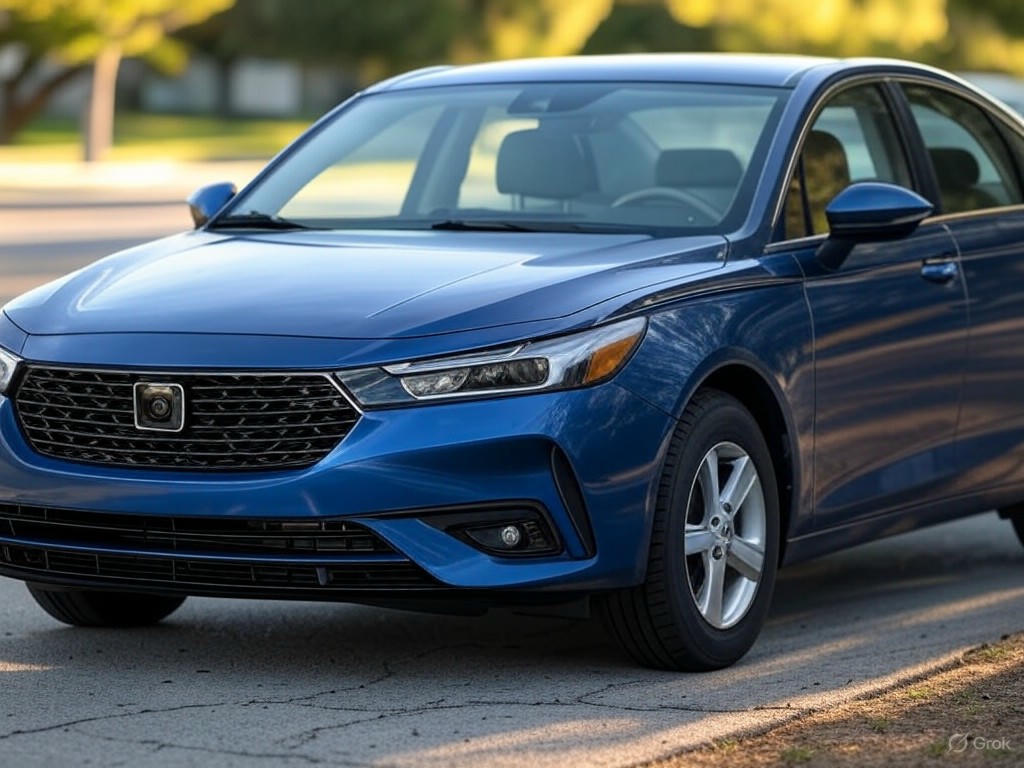
Technical Foundations and System Architecture of Level 3 Vehicles
Level 3 autonomy marks a significant advancement beyond traditional driver assistance, enabling vehicles to manage driving tasks autonomously within defined Operational Design Domains (ODD), such as controlled-access highways, while requiring the driver to remain ready to intervene when requested. To appreciate what powers this conditional automation, it is essential to understand the interplay of three core technical pillars: sensor suites, onboard computing hardware, and sophisticated software algorithms. This section examines these components in detail, using leading examples like Mercedes-Benz’s DRIVE PILOT and Tesla’s Full Self-Driving (FSD) to illustrate different system architectures and capabilities.
Sensor Suites: Comprehensive Environmental Perception
Central to Level 3 autonomy is a highly advanced sensor suite that provides a rich, real-time understanding of the vehicle’s surroundings. Unlike Level 2 systems that predominantly rely on cameras and radar, Level 3 vehicles typically integrate LiDAR, radar, and multiple cameras to cover a wide spectrum of driving scenarios and environmental conditions.
-
LiDAR: The inclusion of LiDAR sensors is a hallmark of many Level 3 systems, offering high-resolution, long-range depth perception crucial for precise object detection and environmental mapping. For example, Aeva’s Atlas Ultra, unveiled at CES 2025, delivers detection ranges up to 500 meters with three times the resolution of previous generations in a compact form factor optimized for vehicle integration. Hesai’s “Infinity Eye” platform exemplifies ultra-high-definition LiDAR technology with component commonality across product lines, enhancing scalability and cost-effectiveness.
-
Radar: Radar remains indispensable for detecting objects at long distances and under adverse weather conditions such as fog or heavy rain, where optical sensors struggle. Modern radar units can reliably sense objects several hundred meters away, providing critical data on speed and distance. Regional adoption varies, with North America leading usage compared to China, reflecting differing market and regulatory environments.
-
Cameras: Multi-camera arrays provide detailed visual data essential for object classification, lane detection, and semantic understanding. Tesla’s FSD system, for example, employs eight strategically placed cameras for full 360-degree coverage, supplemented by front-facing radar and long-range ultrasonic sensors. This layered sensor approach ensures redundancy and rich contextual awareness.
Effective Level 3 autonomy depends heavily on sensor fusion, the real-time integration of data from LiDAR, radar, and cameras with minimal latency—typically under 100 milliseconds—to create a coherent and dynamic environmental model. This fusion enables accurate perception of complex traffic environments and supports rapid decision-making.
Computing Hardware and Software: Orchestrating Autonomy
The vast streams of sensor data require powerful computing platforms capable of rapid processing and interpretation. Level 3 vehicles deploy advanced multi-core processors and dedicated AI accelerators to handle teraflops of data per second, running deep neural networks that underpin perception, prediction, and control.
-
Processing Architectures: Mercedes-Benz leverages a zonal computing approach with multiple high-performance “Superbrains” distributed across the vehicle, reducing wiring complexity and enhancing scalability across different models and drivetrains. This architecture supports efficient data handling and real-time responsiveness.
-
AI and Neural Networks: Sophisticated AI models perform perception, object tracking, behavior prediction, and decision-making. These models are trained on vast datasets combining real-world driving and synthetic simulations. Sensor fusion algorithms synthesize inputs from LiDAR, radar, and cameras, improving reliability by minimizing false positives and enhancing environmental understanding.
-
Fail-Safe and Redundancy Systems: Safety is paramount in conditional automation. Research collaborations such as those between Seoul National University and Hyundai MOBIS emphasize multi-layered safety protocols, including a three-step vehicle localization fail-safe system that ensures operational reliability even if individual sensors or subsystems malfunction. Redundant hardware and software layers provide backup to maintain safe control and facilitate smooth handover to the human driver when necessary.
-
Software-Defined Vehicles (SDV): The shift toward SDVs enables over-the-air (OTA) updates, allowing continuous refinement and feature enhancement post-sale. BMW’s latest 7 Series exemplifies this trend with a software-centric design tightly integrating hardware and software development, supporting ongoing improvements in Level 3 capabilities.
Case Studies: Mercedes-Benz DRIVE PILOT and Tesla Full Self-Driving
Examining real-world implementations provides valuable insights into how Level 3 autonomy is realized today.
Mercedes-Benz DRIVE PILOT
Mercedes-Benz’s DRIVE PILOT is the first production-level system to gain international regulatory approval for Level 3 conditional automation. Available on the S-Class and EQS Sedan, it allows hands-free and eyes-off driving at speeds up to 95 km/h (59 mph), surpassing earlier limits of 60 km/h.
-
System Architecture: DRIVE PILOT combines LiDAR, radar, and camera data fused with high-precision HERE HD Live Maps. The mapping data includes granular road attributes like curvature and elevation, enabling proactive anticipation of driving conditions.
-
Fail-Safe Mechanisms: The system incorporates multiple redundancies, including backup sensors and a robust localization fail-safe process. These features ensure safe fallback and seamless transition of control back to the driver if system limits are reached or anomalies are detected.
-
User Experience: During operation within approved ODDs, the system permits the driver to engage in secondary activities such as video streaming or gaming on the central display, acknowledging the reduced driver workload.
Tesla Full Self-Driving (FSD)
Tesla’s approach eschews LiDAR entirely, relying on a camera-centric sensor suite enhanced by radar and ultrasonic sensors. FSD uses eight cameras for 360-degree vision, a front-facing radar, and long-range ultrasonic sensors to create a comprehensive perception model.
-
Computing Hardware: Tesla’s dedicated Full Self-Driving computer (Hardware 3) employs custom AI chips optimized for neural network inference. Although Elon Musk has acknowledged the need to upgrade these systems, Tesla continues to advance FSD through frequent software updates.
-
Software Stack: FSD integrates real-time sensor data with high-definition mapping and neural networks trained on billions of miles of fleet-driven data. This enables functionalities like Navigate on Autopilot, automatic lane changes, and city street driving capabilities.
-
Limitations and Reliability: While FSD excels on highways, its camera-only approach faces challenges in complex urban environments, where the absence of LiDAR reduces redundancy and robustness. The system requires continuous driver attention and readiness to intervene, maintaining classification as Level 2 in most jurisdictions despite its advanced features.
Key Metrics and Reliability Considerations
-
Sensor Ranges: Leading LiDAR units such as Aeva’s Atlas Ultra detect objects up to 500 meters away, radar provides reliable detection several hundred meters ahead, and cameras offer detailed recognition within 150–200 meters, depending on lighting conditions.
-
Processing Latency: Effective Level 3 systems maintain sensor fusion and decision-making latencies below 100 milliseconds to enable timely responses to dynamic traffic scenarios.
-
Safety and Redundancy: Multi-modal sensor arrays combined with fail-safe algorithms significantly reduce accident risk, with studies indicating that sensor fusion can lower accident rates by up to 80%.
-
Regulatory Approvals: Mercedes-Benz’s DRIVE PILOT has secured regulatory certifications in Germany, California, and Nevada, setting a safety benchmark. Tesla’s FSD remains officially classified as Level 2 in most regions, reflecting ongoing regulatory scrutiny.
In summary, Level 3 autonomy in 2025 depends on a finely balanced integration of advanced sensor suites, powerful onboard computing, and AI-driven software. Mercedes-Benz’s DRIVE PILOT illustrates a hardware-rich, safety-first architecture leveraging LiDAR and comprehensive redundancies, enabling real-world deployment with regulatory approval. Conversely, Tesla’s FSD showcases a software-centric, camera-based approach pushing the envelope of autonomous capabilities but facing challenges in achieving full Level 3 reliability and compliance.
As the technology matures throughout 2025, expect continued advancements in sensor fusion, processing speeds, fail-safe systems, and regulatory frameworks. These developments will shape how Level 3 autonomy delivers safer, more convenient driving experiences, bridging the gap toward higher levels of vehicle autonomy in the years to come.
| Aspect | Mercedes-Benz DRIVE PILOT | Tesla Full Self-Driving (FSD) |
|---|---|---|
| Autonomy Level | Level 3 (conditional automation) | Level 2 (advanced driver assistance) |
| Sensor Suite | LiDAR, radar, cameras, HERE HD Live Maps | 8 cameras, front radar, long-range ultrasonic sensors (no LiDAR) |
| Sensor Features | LiDAR with long-range high resolution, radar for all-weather detection, multi-camera fusion | Camera-centric with radar and ultrasonic sensors, no LiDAR |
| Processing Architecture | Zonal computing with multiple high-performance “Superbrains” | Dedicated FSD computer (Hardware 3) with custom AI chips |
| Software & AI | AI models with sensor fusion, behavior prediction, fail-safe localization | Neural networks trained on fleet data, real-time sensor fusion, HD mapping |
| Fail-Safe & Redundancy | Multi-layer fail-safe with backup sensors and localization fail-safe system | Driver attention required; no multi-layer redundancy, less robust without LiDAR |
| Operational Design Domain (ODD) | Controlled-access highways, speeds up to 95 km/h (59 mph) | Highways and city streets with driver supervision |
| User Experience | Hands-free, eyes-off driving; secondary activities allowed within ODD | Driver must remain attentive; no hands-free or eyes-off allowed |
| Regulatory Approval | Approved in Germany, California, Nevada | Classified as Level 2 in most jurisdictions; ongoing scrutiny |
| Key Limitations | Limited to specific ODDs; speed capped at 95 km/h | Camera-only sensor limitations in complex environments; continuous driver attention needed |
Real-World Performance: Practical User Experience and Limitations
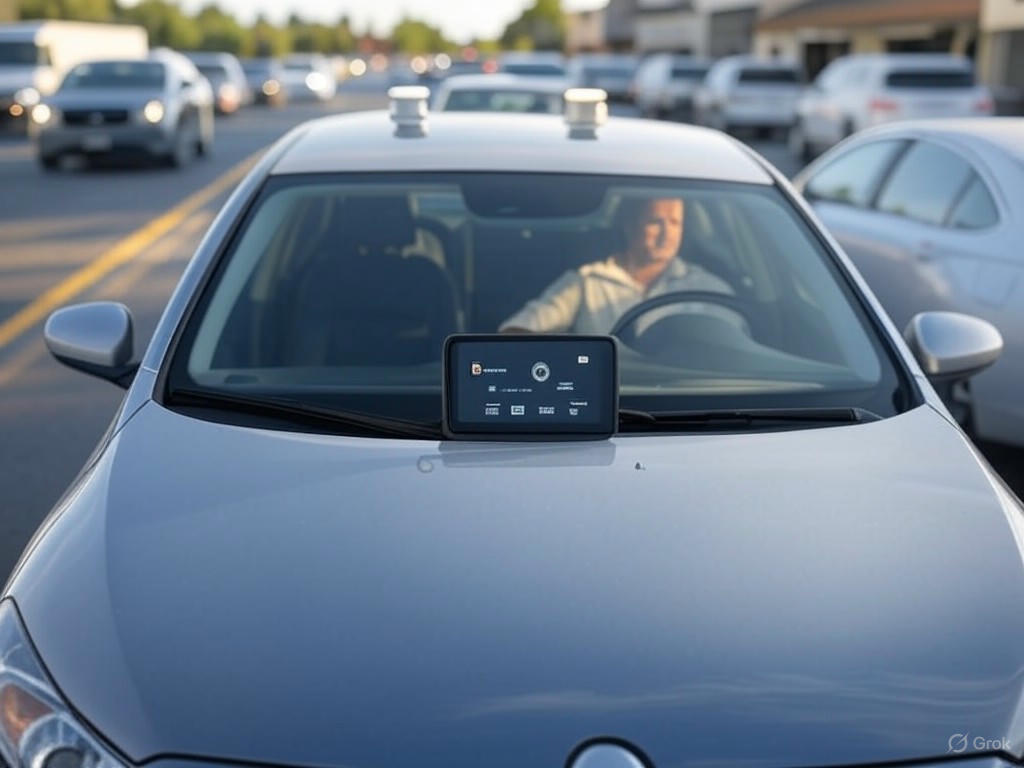
Real-World Performance: Practical User Experience and Limitations
Level 3 autonomy marks a notable advance beyond traditional driver assistance, yet it remains imperfect in everyday driving conditions. Insights from early adopters and technical evaluations reveal a dual reality: significant benefits in reducing driver fatigue coexist with persistent challenges in system reliability and human-machine interaction, especially during handover events. The following analysis synthesizes current data and user feedback to provide a comprehensive view of Level 3 performance.
Performance in Common Driving Scenarios
On controlled-access highways, Level 3 systems demonstrate strong capability during steady cruising and moderate-speed conditions. For instance, Stellantis’s STLA AutoDrive 1.0 enables hands-free and eyes-off driving up to 60 km/h (about 37 mph). This functionality is particularly valuable in stop-and-go traffic jams, where continuous braking and acceleration become tiring. Early users consistently report reduced physical and mental fatigue during congested freeway commutes, attributing it to the system’s management of speed and lane keeping.
Despite these strengths, Level 3 autonomy operates within clear limitations. Most commercially available Level 3 vehicles restrict autonomous operation to well-marked highways with speed caps typically around 60 mph (100 km/h). Unlike Tesla’s more assertive Autopilot or GM’s Super Cruise—both classified as Level 2 with broader operational design domains—Level 3 systems cannot yet handle complex urban environments or high-speed highway maneuvers without active driver supervision.
Emergency intervention remains a critical challenge. While the system can detect certain hazards and execute braking or deceleration, it often struggles with unpredictable scenarios requiring rapid decisions. Driver takeover requests (TORs) in emergencies may be abrupt, offering limited advance warning. This unpredictability raises safety concerns and contributes to increased driver stress.
User Feedback: Strengths and Pain Points
A prominent advantage reported by early adopters is the marked reduction in physical and cognitive fatigue during extended drives or heavy traffic. Drivers appreciate the respite from continuous throttle, steering, and braking inputs, which translates to a more relaxed driving experience.
Conversely, system disengagements are a frequent occurrence. Data from autonomous vehicle testing in California indicates that approximately 75% of disengagements are initiated by human drivers, often triggered by the system’s inability to cope with complex traffic or adverse environmental conditions. These interruptions can be frustrating, especially if the handover process lacks smoothness or timely alerts.
Takeover transitions remain a significant concern. Level 3 autonomy mandates that drivers remain ready to resume control when prompted, but the handoff is not yet seamless. Some users report feeling caught off guard by takeover alerts, which can be distracting and potentially hazardous if the driver is not fully attentive. This human-machine coordination challenge is a recognized limitation, prompting manufacturers to enhance alert systems and incorporate advanced driver monitoring technologies such as eye-tracking to improve readiness.
Operational Design Domains (ODD) and Takeover Triggers
Level 3 autonomy is tightly bound by its Operational Design Domain (ODD)—the specific conditions under which the system can safely operate. Current ODD parameters typically include:
- Controlled-access highways with well-defined, clear lane markings
- Speed limits up to approximately 60 mph (100 km/h)
- Favorable weather conditions, excluding heavy rain, dense fog, or snow
- Moderate traffic density without complex intersections, pedestrian crossings, or construction zones
When driving conditions deviate from these parameters, the system issues driver takeover alerts. Common triggers for these alerts comprise:
- Sudden weather changes that degrade sensor performance
- Complex or dynamic road layouts, such as construction zones or unmarked lanes
- Unpredictable traffic behaviors like cut-ins, abrupt braking, or erratic drivers
- Detection of sensor faults or software anomalies by the vehicle’s diagnostic systems
These alerts aim to provide sufficient time for safe driver intervention. However, effectiveness varies, and engineering efforts continue to optimize alert timing, clarity, and driver engagement. Advanced monitoring technologies, including eye-tracking and attention detection, are being refined to ensure drivers are prepared for timely takeovers.
Summary and Practical Implications
In 2025, Level 3 autonomy offers tangible convenience in defined scenarios—especially highway cruising and stop-and-go traffic—by substantially reducing driver workload and fatigue. Nonetheless, it remains conditional autonomy requiring constant driver vigilance and readiness to intervene.
Prospective Level 3 vehicle buyers should anticipate:
- Enhanced comfort during routine highway driving at speeds below 60 mph (100 km/h)
- Frequent system alerts prompting driver takeover in complex or adverse conditions
- Potential frustration stemming from system disengagements and handover timing issues
- The necessity to remain alert and engaged; Level 3 autonomy does not equate to full driverless operation
Compared to Level 2 systems like Tesla Autopilot or GM Super Cruise, which offer broader operational domains but require continuous driver supervision, Level 3 vehicles in 2025 adopt a more conservative approach. They represent meaningful technological progress in semi-autonomous driving but should be regarded as advanced driver aids rather than replacements for human control.
As the technology evolves, ongoing improvements in ODD definitions, sensor fusion, alert protocols, and driver monitoring will narrow the gap between the promise of conditional autonomy and real-world usability. However, fully autonomous freedom remains a future milestone beyond the current state.
This assessment aligns with regulatory developments and industry trends detailed in the introduction and provides a clear, balanced perspective on Level 3 autonomy’s practical performance and limitations.
| Aspect | Details |
|---|---|
| Performance in Common Driving Scenarios |
|
| Emergency Intervention Challenges |
|
| User Feedback: Strengths | Marked reduction in physical and cognitive fatigue during extended drives or heavy traffic; more relaxed driving experience |
| User Feedback: Pain Points |
|
| Operational Design Domain (ODD) Parameters |
|
| Common Takeover Triggers |
|
| Summary & Practical Implications |
|
| Future Improvements |
|
Comparative Analysis: Level 3 vs. Level 2 and Emerging Level 4 Systems
Comparative Analysis: Level 3 vs. Level 2 and Emerging Level 4 Systems
Level 3 autonomy is stepping beyond the conceptual stage, representing a distinct advancement over the prevalent Level 2 driver assistance systems found in many vehicles today. But how does this middle ground of automation compare practically to both the familiar Level 2 systems and the emerging Level 4 technologies poised to redefine driving in the near future?
Autonomy Scope and Driver Involvement: A Practical Breakdown
Level 2 systems, such as Tesla’s Autopilot and GM’s Super Cruise, provide partial automation by managing steering, acceleration, and braking. However, they impose a critical requirement: the driver must remain fully attentive, with hands on or near the wheel, ready to take over instantly. These systems perform best on controlled-access highways, offering lane-centering and adaptive cruise control, but do not permit hands-off or eyes-off driving.
Level 3 autonomy fundamentally shifts the driver’s role from active supervisor to on-call fallback. For example, Mercedes-Benz’s Drive Pilot—the first Level 3 system certified in Germany and now approved in select U.S. states—allows drivers to disengage completely from the driving task under specific conditions. This means hands off, eyes off, but with readiness to resume control upon system request. Conditional automation expands the operational design domain, enabling the vehicle to handle more complex scenarios autonomously, albeit with geographic and speed restrictions. Notably, Mercedes-Benz’s Drive Pilot operates up to 95 km/h (~59 mph) on pre-mapped highways, surpassing typical Level 2 speed ceilings.
Chinese manufacturers like Zeekr and Xpeng are introducing Level 3-capable electric vehicles targeting their domestic markets in 2025. Zeekr’s G-Pilot emphasizes “door-to-door” autonomy within detailed mapped regions, offering free system updates but remaining bound by regulatory and environmental constraints. Similarly, Xpeng’s Level 3 systems enable hands-off, eyes-off operation under certain conditions, reflecting China’s aggressive regulatory push for advanced autonomy. These examples illustrate a broader industry trend: Level 3 systems deliver meaningful autonomy gains over Level 2 but remain tethered to specific operational design domains—defined by road types, speed limits, and geo-fencing—which limits their universal applicability.
Level 4 autonomy, while still in early stages, represents a substantial leap. These systems promise fully driverless operation within defined operational design domains (ODDs), requiring no human intervention—even in complex urban environments. Countries like Germany and China are leading regulatory efforts to authorize Level 4 pilot programs and limited commercial deployments, but widespread consumer availability remains years away. Unlike Level 3, Level 4 systems incorporate extensive redundancy and remote monitoring to manage unpredictable “edge cases” without fallback on a human driver.
Safety Performance and Regulatory Status: The Fine Print
Safety remains paramount as autonomous driving technologies advance. Level 2 systems have demonstrated reductions in certain accident types, but their reliance on continuous driver vigilance has led to criticism and documented incidents—particularly with Tesla’s Autopilot. Despite its technical sophistication, Autopilot has a higher reported accident rate relative to comparable vehicles, highlighting challenges in driver engagement and system limitations.
Level 3 autonomy undergoes stricter regulatory scrutiny. Mercedes-Benz’s Drive Pilot was the first to secure formal approval under the UN Economic Commission for Europe’s updated Regulation R157. This regulation mandates rigorous requirements, including real-time system monitoring, cybersecurity protocols, and fallback strategies. The German Federal Motor Transport Authority’s (KBA) approval of Drive Pilot at speeds up to 95 km/h sets a new safety benchmark for production vehicles.
In the United States, regulatory acceptance is piecemeal. California and Nevada have authorized limited deployment of Drive Pilot-equipped EQS sedans, governed by legislation such as California’s AB1777, which holds permit holders liable for incidents during autonomous operation. However, comprehensive federal standards are still evolving. Globally, over 50 countries are drafting or enacting autonomous vehicle legislation, with China aggressively mandating that 30% of new vehicles sold by 2025 incorporate Level 3 or higher autonomy.
Level 4 systems face even greater hurdles. Despite promising pilot programs and robotaxi deployments by companies like Waymo and Cruise, proving safety equivalence to human drivers remains a complex challenge. Market forecasts by McKinsey and Goldman Sachs suggest Level 4 vehicles will account for roughly 4% of new car sales by 2030, underscoring the technical and regulatory complexities involved.
Benchmarking Tesla Autopilot and GM Super Cruise Against Level 3 Systems
Tesla’s Autopilot remains the most recognized semi-autonomous system globally. It employs a vision-centric sensor suite comprising eight cameras, a front-facing radar, and ultrasonic sensors, managed by Tesla’s Full Self-Driving (FSD) computer with custom AI chips. The system leverages massive real-world data collected from millions of vehicles, enabling rapid iterative software improvements in perception and decision-making. However, Autopilot remains officially classified as Level 2 due to regulatory constraints and driver engagement requirements. It imposes speed restrictions aligned with posted limits and mandates driver attention at all times. Moreover, concerns about accident rates highlight the gap between marketing claims and real-world safety.
GM’s Super Cruise is a more conservative but highly regarded Level 2+ system. It supports true hands-free driving on over 850,000 miles of meticulously mapped highways across North America, with plans to expand to 1.2 million miles by the end of 2025. Super Cruise uses a multi-sensor setup, including LiDAR-based HD mapping and an internal driver attention monitor that tracks eye and head position. While it does not permit eyes-off driving, it is praised for its accuracy and robust driver monitoring. This cautious approach prioritizes safety and regulatory compliance.
In contrast, Mercedes-Benz’s Level 3 Drive Pilot enables “eyes-off” driving within specific geo-fenced zones and at speeds up to 95 km/h (~59 mph). It integrates a sophisticated sensor fusion suite combining LiDAR, radar, cameras, and HERE HD Live Maps, along with rigorous fail-safe and redundancy systems. Available in luxury models like the S-Class and EQS sedans, Drive Pilot marks the first production vehicle system certified for true conditional automation, though its availability remains limited by regulatory and geographic factors.
Chinese firms Zeekr and Xpeng are aggressively pushing Level 3 technology domestically. Zeekr’s G-Pilot offers door-to-door autonomy within mapped regions, supports over-the-air updates, and aims to compete with Tesla by enabling hands-off driving in dense urban and highway scenarios. However, these systems remain constrained by regulatory approvals and detailed mapping requirements, similar to Mercedes-Benz’s approach.
Key Takeaways
-
Level 2 systems (Tesla Autopilot, GM Super Cruise) provide advanced driver assistance but require constant driver engagement, with limitations on speed and operational domains.
-
Level 3 autonomy (Mercedes-Benz Drive Pilot, Zeekr, Xpeng) delivers a meaningful step up by enabling hands-off and eyes-off driving within tightly controlled, geo-fenced environments, backed by regulatory certification—though still limited in speed and geography.
-
Level 4 autonomy remains largely experimental, with pilot programs and robotaxi services in select regions. Regulatory and safety challenges delay broad consumer availability.
-
Tesla’s approach prioritizes vast real-world data and rapid software iteration but grapples with safety perception and official Level 3 certification.
-
GM’s Super Cruise leads in mapped road coverage and driver monitoring rigor but stops short of offering true Level 3 conditional automation.
-
Mercedes-Benz currently sets the industry benchmark for certified Level 3 autonomy, combining advanced sensor fusion, regulatory compliance, and higher operational speeds.
-
Chinese manufacturers are carving out a strong niche with aggressive Level 3 rollouts supported by government mandates and infrastructure investments.
For consumers in 2025, Level 3 autonomy is an emerging reality, especially in markets like Germany, China, and select U.S. states. However, it remains a specialized technology requiring careful attention to system limitations, operational design domains, and evolving regulatory frameworks. The coming years will be critical in determining how Level 3 autonomy transitions from premium niche applications into mainstream adoption.
| Aspect | Level 2 Systems (Tesla Autopilot, GM Super Cruise) | Level 3 Systems (Mercedes-Benz Drive Pilot, Zeekr, Xpeng) | Level 4 Systems (Emerging) |
|---|---|---|---|
| Automation Scope | Partial automation (steering, acceleration, braking); requires constant driver attention and hands on/near wheel | Conditional automation; hands-off, eyes-off under specific conditions; driver as fallback; geo-fenced and speed limited | Full driverless operation within defined operational design domains; no human intervention needed |
| Operational Design Domain (ODD) | Controlled-access highways, lane-centering, adaptive cruise control | Pre-mapped highways and urban areas with geo-fencing; speed limits up to ~95 km/h (59 mph) | Complex urban and highway environments within defined zones |
| Driver Involvement | Driver must remain fully attentive; hands on/near wheel; ready to take over instantly | Driver can disengage completely but must be ready to resume control on system request | No driver involvement required |
| Safety and Regulatory Status | Reduces some accident types but criticized for reliance on driver vigilance; Tesla Autopilot has higher reported accident rate | Stricter regulatory scrutiny; UN Regulation R157 certification (e.g., Mercedes-Benz Drive Pilot); limited US state approvals; China mandates 30% of new vehicles with Level 3+ by 2025 | Pilot programs and limited commercial deployments ongoing; regulatory and safety challenges remain; market forecasts predict ~4% new sales by 2030 |
| Sensor Suite | Tesla: 8 cameras, front radar, ultrasonic sensors; GM: LiDAR-based HD mapping, driver attention monitor | Mercedes-Benz: LiDAR, radar, cameras, HERE HD Live Maps; Zeekr and Xpeng: sensor fusion with mapping and OTA updates | Extensive sensor fusion with redundancy and remote monitoring for edge cases |
| Speed Capability | Aligned with posted speed limits; typical ceiling lower than Level 3 | Up to 95 km/h (~59 mph) on pre-mapped highways (Mercedes-Benz Drive Pilot) | Varies by deployment but designed for urban and highway speeds within ODD |
| Geographic Availability | Widely available globally in many vehicles | Limited to specific countries and regions (Germany, select US states, China); regulatory and mapping constraints | Limited pilot regions; broader availability years away |
| Driver Monitoring | Mandatory continuous driver monitoring (GM uses eye and head tracking; Tesla relies on driver vigilance) | System monitors operational status; driver must be ready to intervene if requested | No driver monitoring needed |
| Examples | Tesla Autopilot, GM Super Cruise | Mercedes-Benz Drive Pilot, Zeekr G-Pilot, Xpeng Level 3 | Waymo, Cruise robotaxi services (pilot programs) |
| Market Status | Mature and widely deployed | Emerging with regulatory approvals and limited commercial availability | Experimental with pilot projects; commercial availability expected in future |
Regulatory Environment and Safety Standards Impacting Level 3 Adoption
Regulatory Environment and Safety Standards Impacting Level 3 Adoption
Level 3 autonomy is transitioning from concept to reality, making cautious but tangible inroads into consumer vehicles, largely propelled by evolving regulatory frameworks. Germany leads the charge, having granted official approval for Mercedes-Benz’s DRIVE PILOT system, allowing conditional autonomous driving at speeds up to 95 km/h (59 mph). This approval represents a significant milestone—not only is it the fastest certified Level 3 system available today, but it also reflects regulators’ increasing trust in the technology’s safety and reliability within strictly controlled scenarios.
Global Regulatory Approvals and Frameworks
The German Federal Motor Transport Authority (KBA) approval of Mercedes-Benz DRIVE PILOT stands as a watershed moment in Level 3 autonomy. This system, available on flagship models such as the S-Class and EQS, operates within a narrowly defined Operational Design Domain (ODD), primarily on highways at speeds up to 95 km/h. The certification followed rigorous testing and marks the first production vehicle system certified for Level 3 autonomy at such speeds.
Germany is also actively working on amendments to the UNECE ALKS (Automated Lane Keeping System) regulation to permit higher automated driving speeds, potentially up to 130 km/h. This regulatory evolution could unlock broader capabilities and wider deployment in the coming years.
Beyond Germany, the UN Economic Commission for Europe (UNECE) updated Regulation R157 to enable Level 3 automated driving, establishing strict standards on system monitoring, fallback readiness, and cybersecurity. This framework forms the foundation for countries including France, Japan, and other EU member states to adopt Level 3 systems. The European Union aims to implement a unified regulatory framework by 2026, with standardized autonomous vehicle certification planned for 2027. These initiatives will simplify cross-border deployment and accelerate market growth across Europe.
China is advancing aggressively with its own approach. Over 20 cities have been selected for pilot programs integrating “vehicle-road-cloud” systems, and new regulations introduced as recently as December 2024 mandate that 30% of new vehicles sold by 2025 incorporate Level 3+ autonomy capabilities. This ambitious regulatory environment positions China as the largest market for self-driving cars by the end of the decade. Domestic automakers like Zeekr, Xpeng, and GAC are launching Level 3-equipped models supported by these government mandates.
In contrast, the United States presents a more fragmented regulatory landscape. States such as California and Nevada have authorized testing and limited use of Level 3 systems like DRIVE PILOT under strict safety conditions. The National Highway Traffic Safety Administration (NHTSA) is pursuing a more flexible and streamlined regulatory framework, effective June 2025, including exemptions tailored for Automated Driving Systems (ADS). However, full consumer availability remains limited due to patchwork state legislation and a cautious federal stance.
Governmental Testing Permissions, Liability, and Safety Certifications
Governmental permissions for testing Level 3 systems are a critical gatekeeper for regulatory readiness. Germany’s approval of DRIVE PILOT involved exhaustive evaluation, including mandatory safety certifications and operational constraints. Despite the go-ahead, certain features—such as “Automated Driving Marker Lights” that signal autonomous operation to other road users—are still disallowed in Germany, reflecting ongoing regulatory prudence.
Liability frameworks continue to evolve but maintain complexity. European regulators are moving toward clearer manufacturer responsibilities as vehicles transition control between human and machine. The European Transport Safety Council (ETSC) advocates for enhanced oversight and clarity, emphasizing that while Level 3 systems can assume full control under defined conditions, drivers must always remain available to resume control upon system request.
China’s regulations explicitly address liability and data protection, balancing rapid innovation with public safety. Its “vehicle-road-cloud” pilot programs include strict monitoring and cybersecurity requirements manufacturers must satisfy for deployment approval.
In the U.S., NHTSA’s autonomous vehicle program emphasizes detailed operational data submissions by manufacturers to verify ADS performance and safety. Liability remains a contentious issue, with ongoing debates over fault allocation among drivers, Original Equipment Manufacturers (OEMs), and software suppliers. California’s AB1777 legislation, effective in 2024, holds permit holders liable for violations during autonomous vehicle operation, signaling a stricter enforcement environment.
Legislative Impact on Consumer Availability and Market Penetration
The regulatory divergence across regions profoundly influences consumer access to Level 3 vehicles and the speed of market penetration.
Germany’s early approval of Mercedes-Benz DRIVE PILOT has given the brand a significant head start in Europe, allowing sales of Level 3-capable S-Class and EQS models as of early 2025. This positions Germany, and potentially neighboring EU markets, as front-runners in consumer adoption, though widespread availability hinges on the EU’s harmonized certification framework anticipated in 2026–2027.
China’s aggressive regulatory push and government support are fostering rapid market entry for domestic automakers like Zeekr, Xpeng, and GAC, who are launching Level 3-equipped vehicles imminently. This contrasts with Tesla’s slower rollout of its Full Self-Driving (FSD) suite in China, where public road tests have revealed reliability challenges. Given China’s market size and regulatory backing, it is expected to capture the largest global share of Level 3 vehicles by the late 2020s.
In the United States, the cautious and fragmented regulatory environment has slowed mainstream consumer availability. While California and Nevada serve as testbeds for Level 3 systems, broader deployment remains several years away. Industry forecasts, including from Goldman Sachs, project that Level 3 vehicles could represent up to 10% of new car sales globally by 2030, yet in the U.S., Level 2+ Advanced Driver Assistance Systems (ADAS) continue to dominate due to regulatory and infrastructure hurdles.
Key Takeaways
-
Germany’s DRIVE PILOT certification at 95 km/h sets the fastest and most prominent Level 3 approval, reflecting high technical and safety standards.
-
UNECE’s Regulation R157 and the EU’s forthcoming unified framework are crucial for scaling Level 3 adoption across Europe.
-
China’s regulatory environment is the most aggressive, mandating 30% Level 3+ vehicle sales by 2025 and fostering rapid market penetration.
-
The U.S. regulatory landscape remains cautious and fragmented, prioritizing testing and data transparency over immediate consumer deployment.
-
Liability and safety certification frameworks remain central challenges, with ongoing debates on responsibility division between drivers and automated systems.
The regulatory environment for Level 3 autonomy is complex and regionally varied. For consumers, this means access and capabilities will differ significantly depending on location. Legislations and liability considerations shape Level 3 adoption as much as the underlying technology itself. Expect cautious but accelerating launches in Europe and China, with the U.S. gradually catching up over the next few years.
| Region | Regulatory Status | Key Approvals/Regulations | Operational Conditions | Market Impact | Liability & Safety Notes |
|---|---|---|---|---|---|
| Germany | Approved | Mercedes-Benz DRIVE PILOT certified by KBA; amendments to UNECE ALKS pending | Highways up to 95 km/h; potential future increase to 130 km/h | Early consumer availability on S-Class and EQS; head start in Europe | Strict safety certifications; some features like Automated Driving Marker Lights disallowed |
| European Union (General) | Developing unified framework | UNECE Regulation R157 for Level 3; EU unified certification planned for 2027 | Standardized cross-border ODD expected | Harmonized market growth and deployment from 2026–2027 | Emphasis on manufacturer responsibility; ongoing liability framework evolution |
| China | Aggressive mandates | Regulations mandating 30% Level 3+ vehicles by 2025; vehicle-road-cloud pilot programs | Multiple city pilot programs; integration of vehicle-road-cloud systems | Largest market projected by 2030; rapid model launches by Zeekr, Xpeng, GAC | Strict cybersecurity and data protection; clear liability rules in place |
| United States | Cautious and fragmented | State-level approvals (California, Nevada); NHTSA’s flexible framework from June 2025 | Limited testing and restricted consumer use | Slow mainstream adoption; Level 2+ ADAS dominant | Complex liability debates; AB1777 enforces permit holder responsibility |
Market Availability and Consumer Considerations for 2025 Level 3 Vehicles
Market Availability and Consumer Considerations for 2025 Level 3 Vehicles
Level 3 autonomy is transitioning from concept and pilot programs into tangible consumer products in 2025. However, it remains a niche offering with specific operational limits and practical considerations. Prospective buyers should understand which automakers are leading the deployment, the realistic feature sets available, and the broader implications beyond marketing claims.
Who’s Offering Level 3 in 2025? Pricing, Models, and Geographic Availability
Among OEMs, Stellantis stands out with its STLA AutoDrive 1.0 system, delivering genuine Level 3 capabilities. This system enables hands-free, eyes-off driving on controlled-access highways at speeds up to 60 km/h (~37 mph), particularly effective in stop-and-go traffic jams. The Jeep Wagoneer is the first mainstream model to launch with this technology. Alfa Romeo and Maserati are also introducing Level 3 systems, but these will initially target premium market segments with prices likely exceeding $70,000, reflecting both the advanced technology and brand positioning.
Globally, Europe and Japan lead Level 3 adoption, benefiting from regulatory alignment with UNECE Regulation R157, which allows “eyes-off” automated driving under defined conditions. In Europe, forecasts suggest that roughly 21% of new vehicles sold in 2025 will feature Level 3 autonomy, primarily in premium categories. Japan complements this with infrastructure investments and a roadmap targeting nationwide Level 4 testing by 2027.
In contrast, North America presents a fragmented landscape. Tesla’s Full Self-Driving (FSD) suite approaches Level 3 functionality in practice but remains officially classified as Level 2 due to regulatory and system constraints. GM’s Super Cruise offers hands-free driving on mapped highways but similarly does not meet full Level 3 criteria. Ford’s BlueCruise, available on models like the Mustang Mach-E and F-150 Lightning, bridges the gap toward Level 3 but is officially Level 2. Ford’s CEO, Jim Farley, anticipates Level 3 autonomy will become “table stakes” by 2026, positioning 2025 as a transitional year.
Practical Buying Considerations: Infrastructure, Insurance, and Software Updates
Infrastructure Compatibility
Level 3 systems require specific infrastructure to operate safely and effectively. This generally includes well-marked, controlled-access highways with precise digital mapping. Urban and rural environments lacking such infrastructure will limit Level 3 system benefits for daily drivers.
Countries such as Germany, France, and Japan have proactively invested in infrastructure upgrades and regulatory frameworks supporting Level 3 driving. The U.S., however, features a patchwork of 34 states with autonomous vehicle statutes, resulting in inconsistent infrastructure readiness. Potential buyers should verify local regulations and road suitability to ensure their Level 3 vehicle operates as intended.
Insurance Impacts
The introduction of Level 3 autonomy is reshaping auto insurance frameworks. Unlike Level 2 systems, where drivers retain full liability, Level 3’s conditional automation shifts some responsibility to manufacturers or software providers in the event of system failures.
As of early 2025, insurers are adapting policies to accommodate this liability shift. Some jurisdictions require manufacturers to hold product liability insurance covering autonomous system malfunctions. Consumers should anticipate potential increases in insurance premiums or the emergence of new policy structures tailored to Level 3-equipped vehicles. This evolving landscape may take several years to stabilize.
Software Update Policies
Level 3 vehicles depend heavily on over-the-air (OTA) software updates to enhance functionality, address safety issues, and maintain regulatory compliance post-sale. Regulatory frameworks such as California’s AB1777 mandate secure, timely OTA updates without compromising system integrity.
Manufacturer approaches to software updates vary:
- Tesla leads with frequent and comprehensive OTA updates, continuously refining its FSD capabilities.
- Stellantis and European OEMs implement robust, secure update infrastructures adhering to UNECE R155 CSMS cybersecurity standards.
- Some OEMs still require dealer visits for critical updates, which is less convenient and may delay improvements.
Prospective owners should confirm update frequency, security protocols, and whether updates are included within warranty or subscription plans, as these factors significantly influence the long-term ownership experience and vehicle safety.
Integration with Other ADAS Features and the User Learning Curve
Level 3 autonomy is integrated within a broader suite of Advanced Driver Assistance Systems (ADAS). Typical Level 3-capable vehicles bundle features such as:
- Adaptive cruise control with stop-and-go capability
- Lane centering within highway parameters
- Traffic jam assist
- Automated emergency braking and collision warnings
- Eye-tracking driver monitoring systems to ensure driver readiness for intervention
For instance, Stellantis’ STLA AutoDrive 1.0 fuses data from cameras, radar, and lidar sensors to deliver Level 3 driving within its operational design domain (ODD) while supporting Level 2 functions like lane keeping and collision avoidance outside those limits.
Transitioning from Level 2 to Level 3: What Drivers Need to Know
The shift to Level 3 autonomy introduces a fundamental behavioral change. Drivers can temporarily disengage from active driving tasks but must remain prepared to retake control promptly upon system requests.
This transition is non-trivial. Consumer surveys reveal hesitation and a learning curve as drivers must:
- Understand the system’s operational limits, including speed caps and applicable road types
- Develop trust in automation without becoming complacent
- Master the handover process when prompted to resume manual driving
Hands-on testing and user feedback indicate that early adopters often encounter “system surprise” events—unexpected disengagements or limitations triggered by complex weather or road conditions—requiring immediate driver attention.
Manufacturers address these challenges by incorporating continuous driver monitoring, multi-modal alerts, and comprehensive educational materials such as user manuals and training videos. Consequently, the initial usage of Level 3 features is expected to be cautious and confined to well-defined highway segments until both consumer confidence and system reliability improve.
Bottom Line
Level 3 autonomy in 2025 is a significant technological advancement moving beyond science fiction into commercially available vehicles, albeit with operational constraints. Models like the Jeep Wagoneer equipped with Stellantis’ STLA AutoDrive 1.0 offer genuine Level 3 capabilities, while premium brands such as Alfa Romeo and Maserati are preparing similar offerings at higher price points.
Meanwhile, Tesla and GM continue to deliver advanced Level 2+ driver assistance systems that blur the lines but remain officially Level 2 due to regulatory definitions. Buyers should carefully consider local infrastructure readiness, evolving insurance policies, and the manufacturer’s software update commitments before purchasing.
Finally, be prepared for a meaningful learning curve transitioning from Level 2 to Level 3 autonomy. The technology promises enhanced safety and convenience but requires vigilant driver engagement and adaptability. As Level 3 systems mature, they will pave the way toward more widespread autonomous driving, but for now, real-world caution and responsibility remain paramount.
| Aspect | Details |
|---|---|
| Leading OEMs with Level 3 in 2025 | Stellantis (STLA AutoDrive 1.0), Alfa Romeo, Maserati |
| First Mainstream Model with Level 3 | Jeep Wagoneer (Stellantis) |
| Level 3 Driving Conditions | Hands-free, eyes-off on controlled-access highways up to 60 km/h (~37 mph), effective in stop-and-go traffic |
| Price Range for Premium Models | Likely > $70,000 (Alfa Romeo, Maserati) |
| Geographic Availability | Europe and Japan leading (regulatory alignment with UNECE R157); North America fragmented |
| Europe 2025 Level 3 Forecast | ~21% of new vehicles with Level 3 autonomy, mostly premium segments |
| Japan Roadmap | Level 4 testing nationwide by 2027 with infrastructure investments |
| North America Status | Tesla FSD, GM Super Cruise, Ford BlueCruise are Level 2 officially, approaching Level 3 functionality |
| Ford CEO Expectation | Level 3 autonomy to become “table stakes” by 2026 |
| Infrastructure Requirements | Well-marked highways, precise digital mapping; Germany, France, Japan proactive; US patchy with 34 states having AV statutes |
| Insurance Impacts | Shifted liability to manufacturers for Level 3; evolving policies; possible premium increases; product liability insurance required in some regions |
| Software Update Policies | OTA updates critical; Tesla frequent OTA; Stellantis & EU OEMs follow UNECE R155 CSMS; some OEMs require dealer visits |
| ADAS Features Bundled with Level 3 | Adaptive cruise control with stop-and-go, lane centering, traffic jam assist, automated emergency braking, eye-tracking driver monitoring |
| Driver Transition Challenges | Understanding limits, trust building, mastering handover, handling system surprise events |
Future Outlook: Innovations and Challenges Beyond Level 3 Autonomy
Future Outlook: Innovations and Challenges Beyond Level 3 Autonomy
The progression from Level 3 to higher levels of vehicle autonomy depends on significant technological breakthroughs and the resolution of complex real-world challenges. While Level 3 autonomy—conditional hands-free driving within defined operational design domains (ODD)—is approaching commercial readiness, the journey toward full autonomy involves navigating an intricate landscape of technical, regulatory, and societal hurdles.
Technological Innovations Driving the Next Step
Key advances in artificial intelligence (AI), sensor fusion, and connectivity underpin the evolution beyond Level 3 autonomy.
-
Artificial Intelligence: The development of AI for autonomous driving increasingly leverages sophisticated simulations and reinforcement learning models. These train systems to handle a broad spectrum of driving scenarios with optimal decision-making. As highlighted at the 2025 Ride AI conference, industry leaders stress that autonomous technology must prioritize practical mobility outcomes over technological novelty alone.
-
Sensor Fusion: Combining data from LiDAR, radar, cameras, and AI algorithms remains fundamental. This multi-modal sensor integration delivers a comprehensive, redundant understanding of the vehicle’s environment, significantly reducing accident risk—by up to 80%, according to industry studies. MicroVision’s lidar-centric sensor fusion system exemplifies this trend, dynamically integrating multiple sensor types to broaden operational design domains and improve responsiveness.
-
Mapping and Connectivity: High-definition mapping solutions, such as HERE Technologies’ HD Live Map, provide granular road attributes—including curvature, elevation, and real-time traffic—that empower autonomous vehicles to anticipate conditions and adapt driving strategies proactively. Coupled with software-defined vehicle (SDV) platforms supporting over-the-air (OTA) updates, these capabilities are critical for scaling autonomy.
-
Vehicle-to-Everything (V2X) Communication: Accelerated by 5G rollout and cellular V2X standards, V2X enables safer and more efficient vehicle coordination. The global V2X market is projected to exceed $155 billion by 2030, with regulatory momentum in regions like Europe, China, and the U.S. However, infrastructure investment costs and evolving legal frameworks remain significant challenges to widespread deployment.
Persistent Challenges in Urban Environments and Security
Despite technological progress, substantial obstacles remain:
-
System Reliability in Complex Urban Settings: Autonomous systems continue to face difficulties managing “edge cases”—rare, unpredictable situations common in dense urban traffic involving pedestrians, cyclists, and erratic drivers. These scenarios test AI decision-making and sensor interpretation beyond current capabilities.
-
Cybersecurity Risks: As vehicles become networked computers on wheels, vulnerabilities to hacking, malware, and unauthorized access grow. Recent security breaches in connected vehicle portals highlight systemic exposures. While automotive cybersecurity standards like ISO/SAE 21434 are gaining adoption, regulatory and technical safeguards must keep pace with rapid technology deployment.
-
Public Acceptance and Trust: Skepticism persists due to safety concerns, liability complexities, and ethical questions around AI decision-making. For example, some industry leaders, including Bentley’s CEO, have publicly labeled Level 3 autonomy as “dangerous” given risks associated with driver disengagement during abrupt takeover requests. These perceptions slow mainstream adoption even as Level 3 vehicles appear in limited numbers.
Regulatory Harmonization and Adoption Timelines
Regulatory frameworks for autonomous vehicles remain uneven but are evolving:
-
China: Leads with aggressive mandates targeting 30% of new vehicles equipped with Level 3+ autonomy by 2025, supported by over 20 cities piloting integrated vehicle-road-cloud systems.
-
Europe: Aims for unified certification standards by 2026 and standardized autonomous vehicle approvals by 2027, facilitating cross-border deployment.
-
Japan: Plans nationwide Level 4 testing by 2027, with infrastructure upgrades aligned to UNECE Regulation R157.
-
United States: Features a patchwork of state-level statutes, with California and Nevada at the forefront of pilot programs and limited commercial use. The National Highway Traffic Safety Administration (NHTSA) introduced a flexible regulatory framework effective June 2025 to support safe ADS testing and deployment.
Industry forecasts, such as those from McKinsey and Goldman Sachs, predict that Level 3 autonomous vehicles could constitute roughly 10% of new electric passenger cars by 2030, while Level 4+ vehicles may reach only about 4%. Incremental adoption will likely focus on highway-centric autonomy supplemented by advanced driver assistance systems (ADAS) for urban and complex environments.
Industry Trends and Partnerships
OEMs are adopting a pragmatic approach, focusing on market-ready, specialized applications rather than broad hype. Collaborations like Hyundai’s partnership with Nvidia and alliances involving Mobileye, Continental, Aurora, and Nvidia for driverless trucks illustrate a shift toward commercial and robotaxi use cases.
Software-defined vehicle platforms and modular sensor suites are becoming key competitive differentiators, as hardware commoditizes and software complexity increases. These platforms enable continuous improvement through OTA updates and AI-driven enhancements, crucial for maintaining safety and user experience.
What Users Can Realistically Expect Next
Drawing on extensive testing and industry insights, the following expectations are realistic over the next five years:
-
Level 3 Systems Availability: Primarily offered on premium models, these systems enable hands-free, eyes-off driving within limited parameters—generally controlled-access highways or stop-and-go traffic up to speeds around 60 km/h (37 mph). Drivers should anticipate frequent takeover alerts and restrictions in urban or highly complex traffic conditions.
-
Safety Enhancements: Improvements in AI and sensor fusion will increase reliability but will not completely eliminate edge cases. Drivers must remain vigilant and ready to intervene.
-
Connectivity Integration: Growing V2X adoption will enhance safety and traffic efficiency but will be contingent on local infrastructure maturity.
-
Regulatory Landscape: Regional fragmentation will persist, complicating cross-border Level 3 system use until harmonized standards and certifications are established.
-
Public Trust: Trust will gradually improve as real-world deployments accumulate safety data, but skepticism and regulatory caution will remain, especially concerning higher autonomy levels.
In conclusion, Level 3 autonomy is transitioning from concept to cautious commercial reality. Full hands-off driving across diverse environments remains a longer-term prospect. The industry’s trajectory will be shaped by incremental technological advancements, regulatory clarity, and evolving public confidence—factors that will ultimately determine when and how self-driving vehicles become truly mainstream.
| Category | Details |
|---|---|
| Technological Innovations |
|
| Challenges |
|
| Regulatory Outlook |
|
| Industry Trends |
|
| User Expectations (Next 5 Years) |
|
| Market Forecasts |
|






